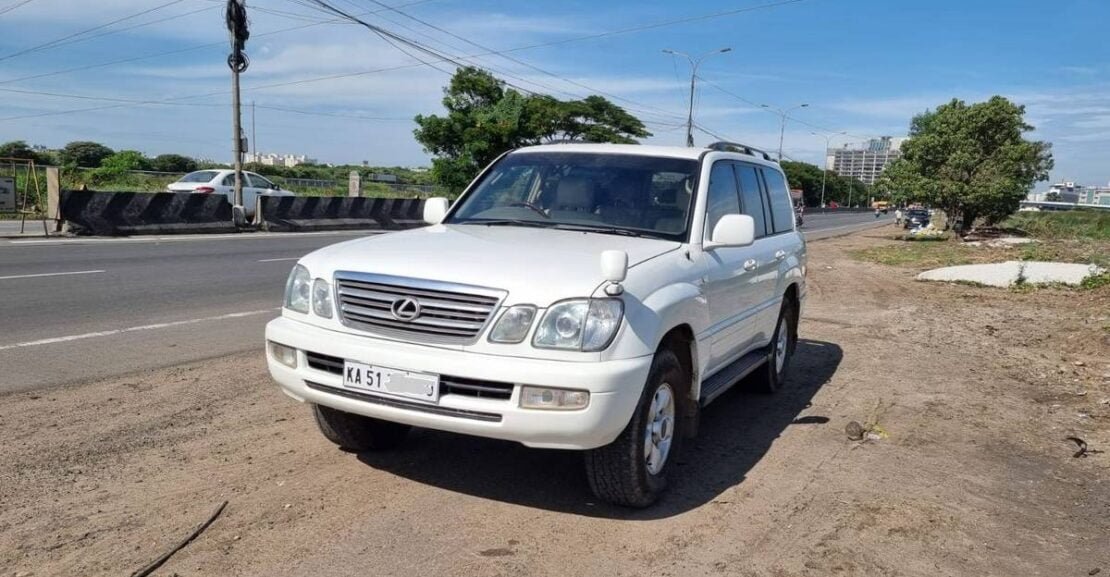The mighty Land Cruiser 100 series is one of the most respected off-roaders in the community. The simple reason is its reliability and go-anywhere capability. On top of that, the SUV is comfortable to ride in despite being a body-on-frame chassis
You have found a handsome looking LanD Cruiser 100 series in your neighborhood. It is for sale. You go there to take a look and all seems fine. But since you are smart, you take it online to ask the people about what are the common problems with this old SUV.
Oh, the SUV is legendary but it has its share of problems. These are not as severe as the Germans but it can be a pain in the butt to keep your car off the tarmac as you get it fixed.
So, it is better to be prepared and avoid surprises. And with that said, let’s take a look at some of the common problems in the Land Cruiser 100 series.
ABS accumulator
This is a dangerous issue as when the ABS accumulator fails, the vehicle loses almost all braking power. And driving a car that weighs over 2 tonnes, that is not be a pretty situation to be in.
You might get ABS and TRAC warning lights on the dashboard. Do not ignore these warnings and get the ABS checked.
The common failure part is the 12v motor that wears out over time and with that, the brake lines do not hold pressure and the brake pedal becomes almost useless.
Toyota sells the whole assembly (master cylinder, accumulator, motor and whatnot) for about USD 3000. They do not sell the 12v motor alone.
So, it is wise to get the motor rebuilt from a reputed shop. For longevity, ask them to rewind the armature, and replace the commutator and bushes.
Also, there is another possible culprit that accelerates motor wear. The resistance wire connects to the booster motor. These corrode over time and may accelerate the motor wear.
Fuel Pump
On the Land Cruiser 100 series, the fuel pump had a failure rate high enough to make it to this list. This can happen on both gasoline and diesel-powered vehicles.
The major contribution is the bad fuel quality, of course. And with due time and enough miles, the fuel pump fails.
You can have it rebuilt by a competent mechanic. Do this only if you know that the competent mechanic is actually competent.
Another solution is to replace it with a Denso or a Bosch unit. These things do cost more than rebuilding but are a more reliable solution.
If you have a parts store that sells this part, replacing it is pretty easy. All it takes is about two hours and patience.
Here is how to do it.
Leaking radiator
Toyota parts are long-lasting. And so a leaking radiator can be seen on models older than 18 years. If the piece has held itself for that long, I’d say buy a replacement only from Toyota.
When inspecting a 100 series, look for hairline cracks atop the radiator. There can be leakage reminiscence as well.
There are aftermarket ones available for as cheap as half price of the OEM. But as I wrote earlier, it is better to not cheap out on a Land Cruiser and gives it a bad rep.
The OEM part costs about USD 340 but can vary depending upon your location.
To save the labour charges, you can do the job by yourself. Although, it is a time-consuming job but s doable. Here is a video guide on how to replace the radiator on a Land Cruiser 100 series.
AHC -Active Height Control
One of the reasons to buy the Land Cruiser is its comfortable ride. Not saying that only AHC is responsible for that, but it is there to make things better.
However, now the car is old and the rubber starts to wear out. The rubber bags leak and force the AHC to be stuck in the lowest position. The first thing is to check the fluid reservoir. If the level is low, you have to crawl under the car and check for any leak spots.
Replacing the whole setup is quite expensive and so people just swap it with the traditional coil spring setup.
Faulty fuse box – Crank and no start
If the previous owner has told you that the car would crank but sometimes not start, there are possibilities that the EFI fuse in the fuse box is experiencing some problem.
This is a well-known issue in this car. The prongs on the fuse socket (EFI fuse to be exact), become loose after bearing vibrations for years. And sometimes it’d not conduct current resulting in a crank but no-start situation.
A solution that prevents it from happening again is to replace the darn fuse box. And boy, these things cost.
Since you cannot clean and reuse them, it is advisable to replace the wires and the rubber boots. These things are hard to source and Toyota charges about USD100 for that.
Heater T joints
The heater Ts are made of plastic on the ’98-’07 Land Cruiser 100 series. And these parts are notorious for failing to cause big coolant leaks.
Most of the time it is preventative maintenance because the loss of coolant can cause engine overheating issues. But if you see faint cracks on the plastic and coolant dripping, then it is time.
The part itself does not cost much (around USD30) and replacing it is pretty easy if you have about half an hour and the right tools.
Here is how you can do it yourself.
And that is pretty much all that I could think of. I hope it helps. 🙂

